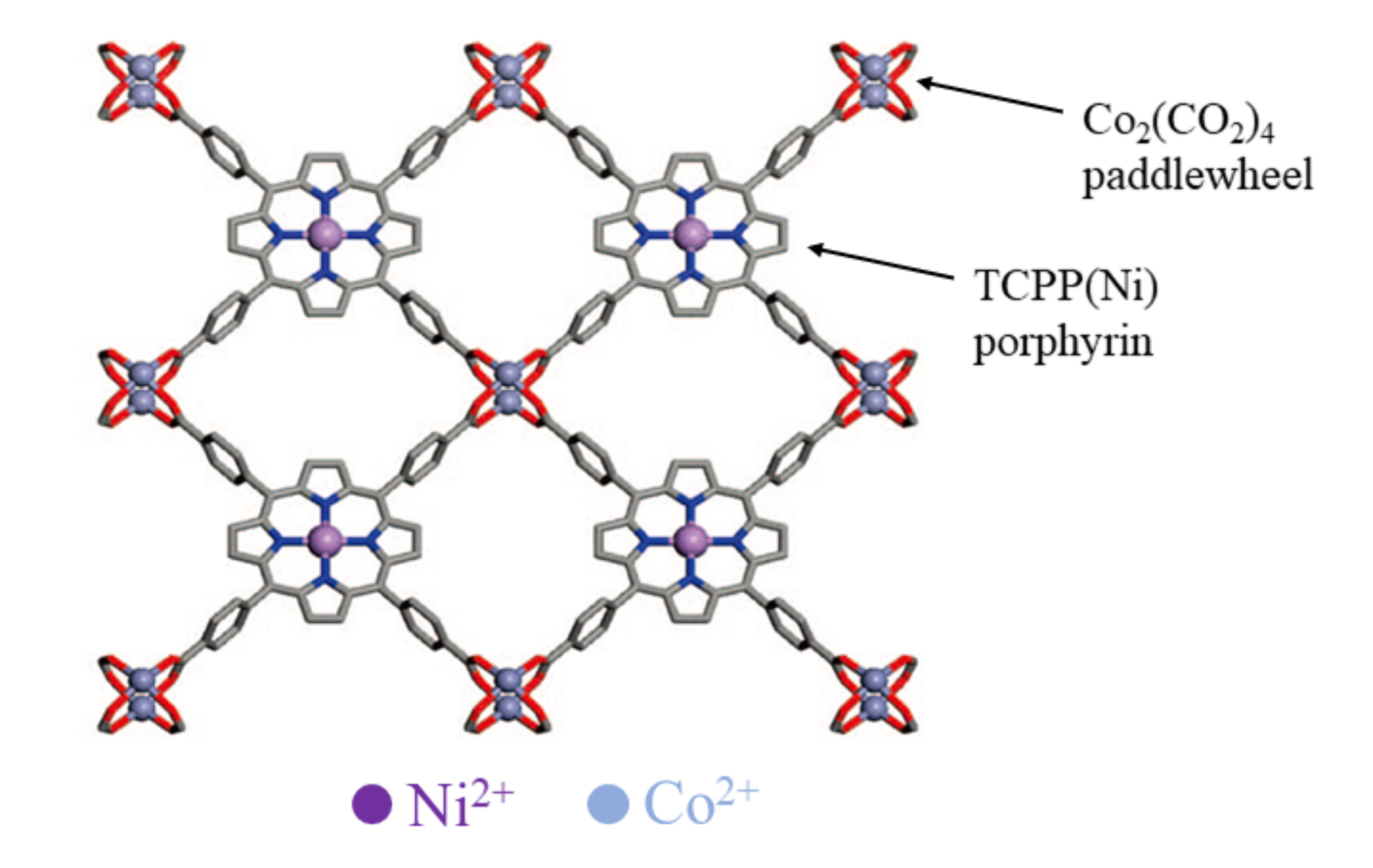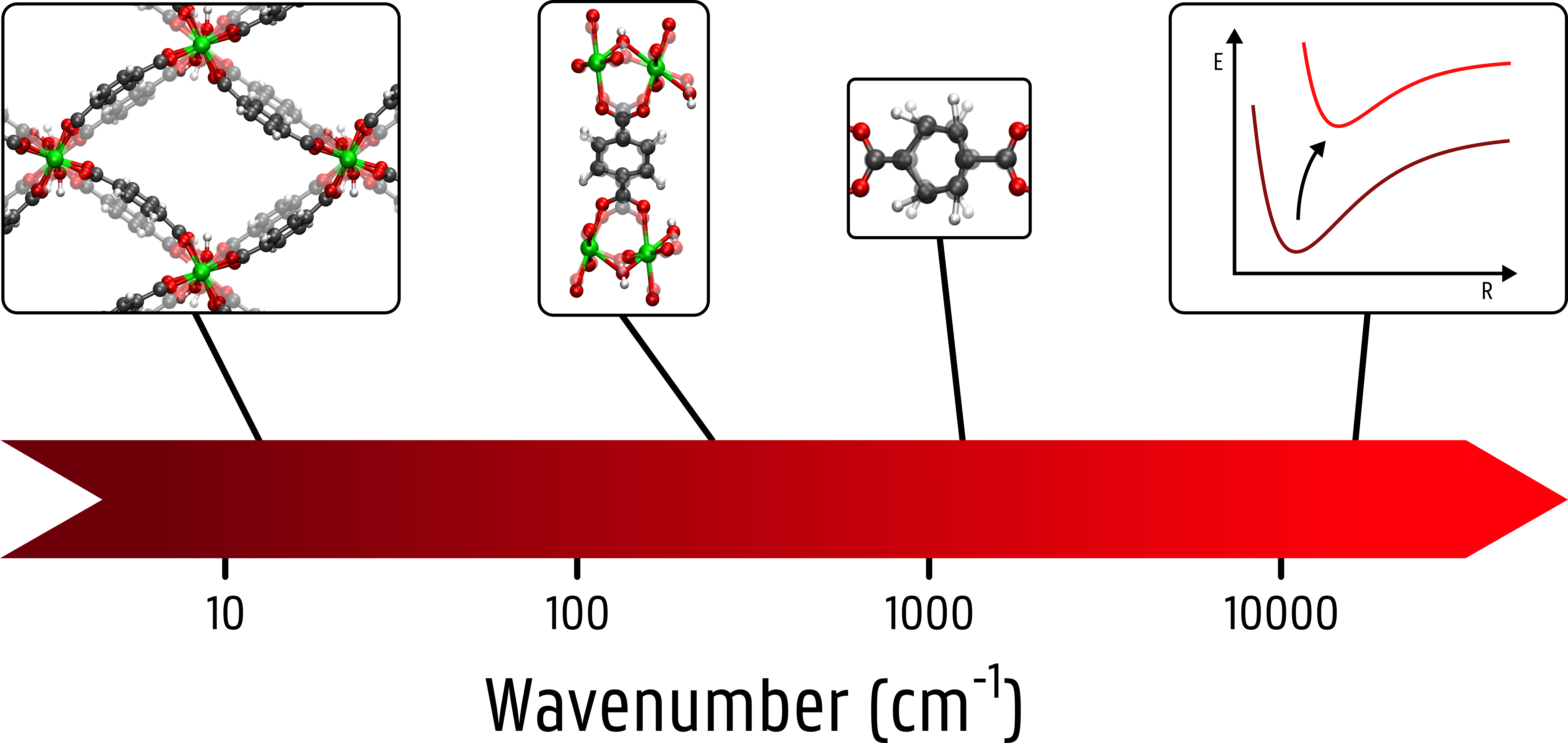A combined theoretical/experimental study of the stability of 2D metal-organic frameworks to design efficient photocatalysts
A combined theoretical/experimental study of the stability of 2D metal-organic frameworks to design efficient photocatalysts
Promotor(en): V. Van Speybroeck, H. Vrielinck /20SPEC01 / SpectroscopyProbleemstelling:
Reduction of CO2 greenhouse gas emission remains an urgent environmental and societal problem. Technologies for efficient selective capture of CO2 upon production, for storing and eventually converting it into high-value chemicals need to be developed. In all these technologies, porous solid materials like metal-organic frameworks (MOFs) may present solutions. MOFs are constructed of metal-inorganic nodes connected by organic linkers or struts to form a porous crystalline 2D or 3D lattice. Depending on the chemistry of their building blocks and the size and shape of their pores, they may selectively capture specific gases from mixtures, or catalyze certain reactions. This thesis project focuses on a porphyrin-based MOF (Co-TCPP(Ni), see Figure 1), which can catalyze the reduction reaction of CO2 to HCOO-.

Figure 1: structure of the Co-TCPP(Ni) (TCCP = Tetrakis(4-carboxyphenyl)porphyrin) 2D MOF
This MOF forms 2D layered structures. Layer-by-layer deposition approaches are currently being investigated to construct a 3D MOF from these building blocks [1], which is a highly nontrivial task. Establishing the success of synthesis requires thorough characterization of the material. Next to X-ray diffraction, the vibrational spectrum revealed through infrared absorption spectroscopy and Raman scattering provides a wealth of information on the structure of the synthesized material. Both the characteristic vibrations of organic functional groups in the mid-infrared and the metal-ligand vibrations in the far-infrared provide insight in the molecular interactions within the 2D layers, but they are also crucial to understand the stability of the 3D MOF variants. By characterizing these vibrations, it is possible to determine how different layers are interacting with each other and how they are connected. Especially for the low frequency modes, the interpretation of these highly cooperative modes is not always obvious from experiment alone and first-principles modeling becomes indispensable. For this reason, this master thesis will follow a combined experimental and computational approach. In view of the photocatalytic activity (this means that the catalyst is only active when it is in a photo-excited state), attention will also be spent on the optical absorption spectrum of the catalyst in the visible range.
Doelstelling:
In this thesis subject, both experimental and computational techniques will be applied to study the structural properties of a porphyrin-based 2D MOF via vibrational spectroscopy. A thorough characterization of the specific vibrational fingerprint regions will lead to a better understanding of the connection between the building blocks, possible defects, and the framework dynamics. Specifically for 2D MOFs, the interaction between different layers has to be investigated with an eye toward the construction of 3D MOF variants.
From the experimental point of view, samples will be characterized with X-ray diffraction (XRD), infrared-visible optical absorption spectroscopy and Raman scattering. The XRD pattern provides an easy quality check for the crystallinity of nanoporous materials and also allows to determine their crystal structure. To obtain a deeper insight in the structural properties of the examined materials, optical absorption spectra will be recorded extending from the far-IR over the mid-IR to the near-IR and visible region. Each of these regions offer specific information on the material under study (see Figure 2). The far-IR region, containing vibrations which extend over the complete framework, will be of interest for the characterization of flexibility and the detection of shear vibrational modes in the 2D MOF. Next, the mid-IR region contains fingerprint vibrations of molecular building blocks, which can be used to detect and characterize defects. Furthermore, the near-IR and visible region can be measured to reveal electronic transitions, which will help to understand the photocatalytic performance of the material. Moreover, Raman scattering experiments will allow to characterize complementary vibrational fingerprints, which are not measured via IR due to selection rules.

Figure 2: Visualization of the different types of excitations within the MOF MIL-53(Al) in the frequency range extending from the far-IR to the visible region. Vibrational modes are reproduced from Ref. [2].
To obtain molecular-level insight in these spectra, the structure and vibrational modes of the material can be determined via computational modelling. Using quantum mechanical calculations based on density functional theory (DFT), one can compute the geometric and electronic structure of these materials. As a result, we can compute several observables such as the XRD pattern as well as the IR and Raman spectra and compare them with the experimental results. The theoretical vibrational spectra will be determined via two independent approaches [2]. The most common strategy starts from a static picture, in which the potential energy surface around equilibrium is approximated through a set of harmonic oscillators. However, to allow for a true comparison with experiments, it is essential to model this material at the real operating conditions. These conditions can be introduced via molecular dynamics (MD) simulations, which take temperature effects and anharmonicities into account by integrating the Newton equations of motions over time. This comes at the cost of an increased computational load. Finally, to theoretically characterize the electronic transitions, time-dependent DFT (TD-DFT) calculations will be performed. Given the complexity of these calculations, the system size will necessarily have to be reduced.
This thesis will be performed at the CMM and the DiSC-EMR research group (website: https://www.ugent.be/we/solidstatesciences/en/research/groups/disc). It comprises both experiments and computational modeling. Depending on the interest of the student, the focus can be shifted towards one or the other. The materials will be synthesized at COMOC (Center for Ordered Materials, Organometallics and Catalysis, UGent, prof. P. Van Der Voort), hence this research will be performed in close collaboration with this research group.
- Study programmeMaster of Science in Engineering Physics [EMPHYS], Master of Science in Physics and Astronomy [CMFYST]KeywordsMetal-organic frameworks, X-Ray Diffraction, Infrared Absorption Spectroscopy, Density functional theory, raman spectroscopy, optical absorption spectroscopyReferences
[1] M. C. So, S. Jin, H.-J. Son, G. P. Wiederrecht, O. K. Farha, J. T. Hupp, Layer-by-layer fabrication of oriented porous thin films based on porphyrin-containing metal−organic frameworks, JACS 135, p. 15698-15701 (2013)
[2] A. E. J. Hoffman, L. Vanduyfhuys, I. Nevjestić, J. Wieme, S. M. J. Rogge, H. Depauw, P. Van Der Voort, H. Vrielinck, V. Van Speybroeck, Elucidating the vibrational fingerprint of the flexible metal-organic framework MIL-53(Al) using a combined experimental/computational approach, J. Phys. Chem. C 122, p. 2734-2746 (2018)
